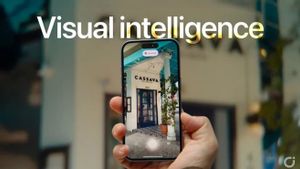JAKARTA – Facial expressions can be likened to a communication device. When someone in front of you smiles, be careful not to misunderstand.
A smile according to Ronald E. Riggio, Ph.D., -a professor of Leadership and Organizational Psychology at Claremont McKenna College- is often associated with conveying happiness, attitudes, and emotions. The types of smiles and their meanings can be identified by the movement of the facial muscles.
Quoting Riggio's writing in Psychology Today, there are 5 types of smiles and each one has a different meaning. So, which type of smile have you ever gotten from the person in front of you?
1. Duchenne's smile represents happinessPsychologist and non-verbal communication expert Paul Ekman uses the term Duchenne smile to describe a smile of true happiness. In addition to the best corners of the mouth, Duchenne's smile is characterized by squinting and happy eyes leaving wrinkles at the corners of the eyes.
2. Fake smileReading the title may make you feel exasperated. Why should someone throw a fake smile? A person who pretends to be happy, perhaps, is forced to smile at someone else to improve his mood.
We often do fake smiles when we are on the 'smile for the camera' signal and for a moment the facial muscles are forced to be pulled to display a smile pretending to be happy.
3. Uncomfortable smileWhen someone feels uncomfortable, such as when they hear someone else say something inappropriate, they may put on an uncomfortable smile to cover their feelings.
4. A seductive smileBased on research conducted by Riiggio, when people try to flirt usually shows a positive effect. With a faint smile accompanied by direct eye contact, a gentle look but there is a wave of suppressed smile.
Interestingly, this type of smile can be followed by a tilting of the head, glancing, showing pride, or even dominant behavior.
5. Sarcastic smileWhen someone smiles sarcastically, the line of the mouth looks reversed. The eyes speak more than the facial muscles that move. Like there is an expression of disgust, amusement, or dislike.
A smile can convey a variety of messages. As explained above, there are people who choose to keep smiling even though they don't want to. But if it is counted every day, there may be hundreds of times we smile as a mode of interaction with people around us.
The English, Chinese, Japanese, Arabic, and French versions are automatically generated by the AI. So there may still be inaccuracies in translating, please always see Indonesian as our main language. (system supported by DigitalSiber.id)








